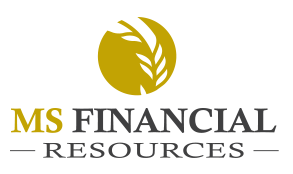Bank failures are relatively rare, but with two having occurred so far this year, it’s an opportune time to revisit our financial principles. The sudden failure of Silicon Valley Bank (SVB), which occurred within days following a 40-year growth run, reminds us that we can’t become complacent or sloppy during or after extended periods of prosperity.
Accordingly, we offer these operating tenets amidst the daily financial headlines about inflation, market volatility or a potential recession:
- Your bank-held money is within limits, insured by the Federal Deposit Insurance Corporation (FDIC). The standard insurance amount is $250,000 per depositor, per insured bank for each account ownership category. For example, husband & wife could each have single owned account within the $250k limit and a JOINTLY owned account with $250k limit. Many depositors who lined up at SVB to retrieve their money likely had nothing to worry about, however, the urgency of the situation made their concerns understandable. The FDIC site speaks further to limits, how to find an insured bank and much more.
- Having liquidity at more than one financial institution, be it a bank or credit union, is not a bad idea. If nothing else, it makes it easier to park assets if you’re closing an account or relationship. And with the universal access to online banking, account holders can transfer money easily or stay within insured account limits.
- Interest rates and bond values move inversely, meaning that as interest rates increase, the short-term value of held bonds declines. This was a primary issue for SVB, which over-committed to long-term bonds that devalued as the Fed raised rates. This decreased the bank’s liquidity and made them unable to meet the overwhelming demands for withdrawals. To raise liquidity, SVB sold the devalued bonds at a substantial $1.8 billion loss.
- Think of insured deposits as the liquid, non-risk aspects of your portfolio. You have control over both—unlike individual stocks’ performance—and should exercise that control. Just as you might ride out a market downturn by managing asset liquidity to equal 3-5 years of living expenses, you can also manage bank account balances to stay within insured limits.
- Asset allocation matters—and it should be monitored and maintained. At SVB, a preponderance of customers were startups or otherwise early-stage companies. Many were infused with venture capital, had high monthly burn rates of cash to cover investment and expenses, like payroll, and consequently ran up account balances that exceeded insured limits. This made for a frantic weekend following the takeover, when depositors didn’t know if their uninsured balances would be made whole, which they quickly were. News reports indicated that more than 85% of SVB accounts exceeded insured limits, far beyond norms, heightening the risk that accompanies account misallocations or overconcentration. Strategies to insure excess deposits are found here.
- Always work with a fiduciary, someone who’s obligated to act in your best interests, and who’s not swayed by commissions or similar. Fiduciaries avoid conflicts and compromise by staying focused on each client’s goals, not their own earnings.
- Regulations often exist for good reason, and many times protect us from ourselves. For example, seat belts save lives. If relaxed, negative outcomes often occur. By relaxing the oversight regulations in 2018 triggered by the Great Recession, bank depositors and investors incurred more risk from less supervision, and in the case of SVB, huge losses. To avoid or discourage a recurrence, a return to prior regulation standards will be considered.
- Those with the information the soonest, can often act the fastest. It’s easier than ever to stay connected. For the most part, financial institutions communicate freely – and free to their clients. Whether you subscribe to emails, newsletters or commentaries, or maybe just set up Google alerts, you can control how much in-the-know you want to be. SVB issued a press release near 4:00 PM on Wednesday, March 8 that broadcast its needs for cash and also the sale of assets at a loss of $1.8 billion. And while this set off alarms for many and triggered a bank run, the information was by no means a secret.
- Trust but verify. This decades-old adage often spoken by President Ronald Reagan about international relations also applies to financial institutions. Banks, credit unions and brokerages routinely share their financial results, with assets, earnings and loan activity commonly reported. Charles Schwab reports monthly and recently confirmed February month-end results of $41.7 billion in new assets, $7.38 trillion of overall assets under management, and 80% of total bank deposits within FDIC limits. Such reporting is often required and can be confirmed with authorities.
- Have a written financial plan. According to Schwab, only 33% of Americans do, despite residual benefits of improved goal-setting, benchmarking, savings habits and overcoming perceived financial roadblocks.
For help or to discuss any of these, we welcome your call or the opportunity to review them at our next meeting.

